![]()
![]()
![]()
Use LEFT and RIGHT arrow keys to navigate between flashcards;
Use UP and DOWN arrow keys to flip the card;
H to show hint;
A reads text to speech;
33 Cards in this Set
- Front
- Back
|
Population
|
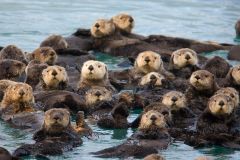
localized group of individuals capable of interbreeding and producing fertile offspring
a. Only populations evolve, not individuals |
|
|
Microevolution
|
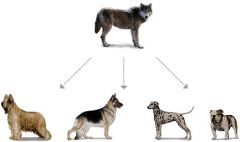
change in the genetic makeup of a population from one generation to the next
a. Ex. Domestic dogs, most domestic dogs started with cross-breeding |
|
|
Geographic variation
|
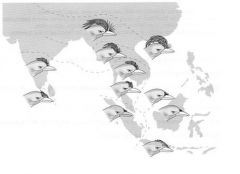
differences between gene pools of separate populations or population subgroups
|
|
|
Sexual Reproduction
|
specific environmental factor that favors certain characteristics within a population or subgroup
|
|
|
Clines
|
graded change in a trait along a geographic axis (geographic variation)
|
|
|
Mutation
|

change in nucleotide sequence of DNA resulting in genetic diversity
|
|
|
Point mutation
|
Chance in as little as one base in a gene resulting in genetic diversity
|
|
|
Sexual Reproduction
|
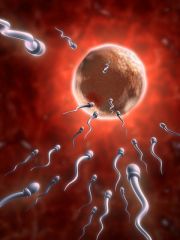
Genetic variation occurs in sexually reproducing organisms during meiosis and fertilization
|
|
|
Population genetics
|
Study of how the genetics of a population change over time
|
|
|
Gene pool
|
All the genes of all members of a population
|
|
|
Alleles
|
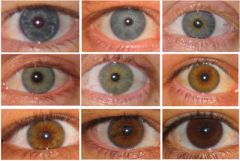
Alternative versions of a gene that produce obvious physical traits
a. Ex. Eye color |
|
|
Phenotype
|
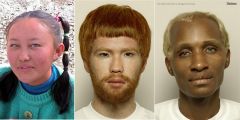
Physically expressed traits of an organism determined by the genetic make-up
|
|
|
Genotype
|
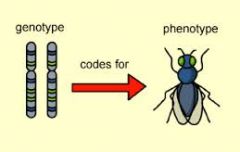
Genetic make-up or set of alleles of an organism (ALL genes whether expressed or not)
|
|
|
Dominant allele
|
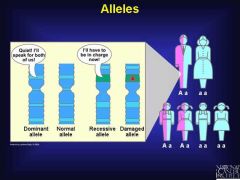
Fully expressed trait in phenotype of heterozygote
|
|
|
Recessive allele
|
Trait whose phenotype is not expressed in heterozygote
|
|
|
Homozygous
|
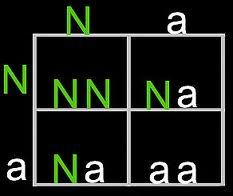
Having two identical alleles for a given trait or gene
|
|
|
Heterozygous
|
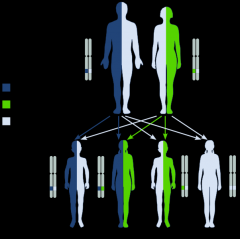
Having two different alleles for a given trait or gene
|
|
|
Hardy-Weinberg Definition
|
Frequencies of alleles and genotypes in a
population’s gene pool remain constant from generation to generation, provided that only Mendelian segregation and recombination of alleles are at work (1908) |
|
|
Conditions for Hardy-Weinberg Equation:
|

1. Population Extremely Large
2.Must be no gene flow 3There must be no Mutation 4.Mating must be random 5.There must be no natural selection |
|
|
Natural selection
|
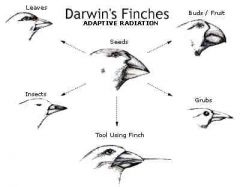
Biological process that encourages passage of beneficial genes to future generations while discouraging passage of harmful genes
|
|
|
Genetic drift
|
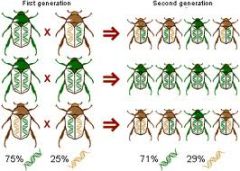
Unpredictable fluctuation in allele frequencies from one generation to the next due to a populations finite size
|
|
|
Bottleneck effect
|
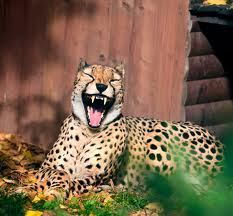
Reduction of a population (due to natural disaster, etc.) in which the survivors are no longer genetically representative of the original population (less diverse)
Ex: Cheetahs |
|
|
Founder effect
|
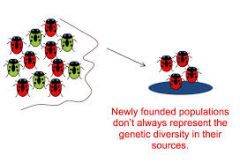
When a small group becomes isolated from a larger population and the new population is no longer genetically representative of the original population (less diverse)
|
|
|
Gene flow
|
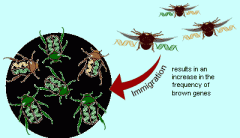
Genetic additions to or subtractions from a population resulting from movement of fertile individuals or gametes
1. Genes move from one generation to the next 2. Genes move from one population to another (reduces differences between populations) |
|
|
Relative fitness
|
Contribution an individual makes to the gene pool of the next generation, relative to the contribution of the other individuals
|
|
|
Directional selection
|
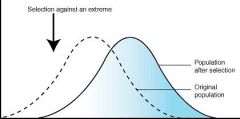
natural selection that ‘
Favors individuals at one end of the Phenotype range |
|
|
Disruptive selection
|

: Natural selection that
Favors individuals at both ends of the Phenotypic range over intermediates Ex. Black-bellied seed-cracker finches of Cameroon; small bills for soft seeds, large Bills for hard seeds – medium bills, useless |
|
|
Stabilizing selection
|
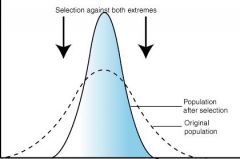
Natural selection that
Favors intermediate individuals by acting Against both ends of the phenotypic range Ex. Human birth weights; mortality increases If the baby is too small or too big |
|
|
Sexual selection
|
Natural selection in choosing mates to insure mating success
|
|
|
Sexual dimorphism
|

Significant differences between sexes within a species in secondary sexual characteristics
|
|
|
Intrasexual selection
|
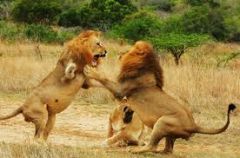
individuals of one sex (usually males) compete directly for mates of the opposite sex
(Ex. Lions) |
|
|
Intersexual selection
|
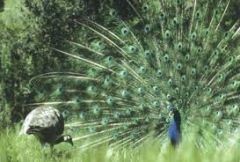
Individuals of one sex (usually females) choose their mates from the most ideal members of the opposite sex (Ex. Birds)
|
|
|
Why are evolved species imperfect?
|

1. Adaptations are often compromises
2. Natural selection can only act on existing variations 3. Chance and the environment also influence natural selection |

